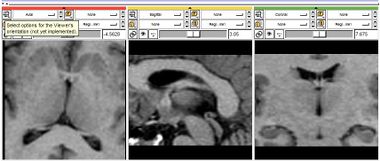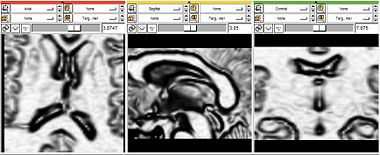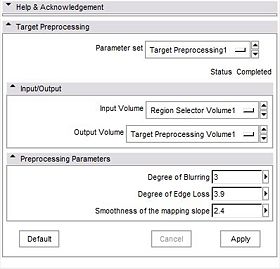Slicer3:Module:Target Preprocessing-Documentation
Return to Slicer Documentation
Module Name
Target Preprocessing
|
|
General Information
The purpose of this filter is to create a feature image that is suitable for a level-set algorithm, from an intensity image.
It takes the original image and performs anisotropic gaussian diffusion on it, reducing the noise while preserving the edges.
Then the magnitude of the gradient is computed. This magnitude is then non-linearly remapped so as to get very small values in the image edges and very big values in homogeneous areas.
Module Type & Category
Type: CLI Category: Level-Set Segmentation
Authors, Collaborators & Contact
- Author: Carlos S. Mendoza, Universidad de Sevilla
- Contact: carlos.sanchez.mendoza@gmail.com
Quick Tour of Features and Use
There is only one panel available in this module:
The parameters have the following meaning:
|
Known bugs
Follow this link to the Slicer3 bug tracker.
Usability issues
Follow this link to the Slicer3 bug tracker. Please select the usability issue category when browsing or contributing.
Source code & documentation
Customize following links for your module.
Links to documentation generated by doxygen.
Acknowledgment
This work was developed on financial support from the University of Sevilla, Spain. Most of the development took place in the Surgical Planning Laboratory, Harvard Medical School and Brigham and Women's Hospital, under the supervision of Mr. Steve Pieper Ph.D.


